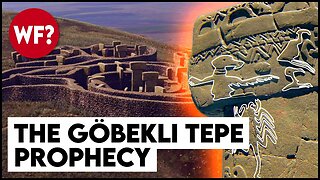Mark wonders what he might get at the Dublin Cemetery
Dublin on the Adelaide Plains. Stone cairn and plaque for the former Dublin Anglican Church.
Dublin and cemetery.
The Hundred of Dublin along with those of Balaklava etc were all declared in 1856. The Governor of the day Sir Richard MacDonnell name the hundred after his birth city, the capital of Ireland. Although farmers did not move into these lands at that time, when they did move onto the lands the town for the Hundred was named Dublin. The leaseholders of the lands were required to give up their lease around 1860 onwards and the first land owners took up land between 1863 and 1874 with a significant increase in land sales in the Hundred of Dublin around 1872. In fact the government surveyed the hundred in 1871, put the land up for sale and then withdrew from sale all of the Hundred of Dublin in late 1871 pending the passing of a new credit selection act which was to come into effect in 1872 making Dublin a credit selection area. So most land in the Hundred sold in 1872. Changes to the land acts and the sale of land on credit instead of auction conditions (cash on the fall of the hammer) created a great boom for land in the early 1870s. Town lots in Dublin were sold in June 1873 primarily to Richardson (he built the hotel), C Young and W Cameres. The town of Dublin was proclaimed in 1876 when a further 40 town lots were sold at auction but building had begun in Dublin prior to the 1873 sales. A Primitive Methodist church was started on 30th September 1873 when the foundation stone was laid. The land was donated by Mr Baker and his daughter laid the foundation stone. It officially opened in December 1874 as an offshoot of the Mallala Primitive Methodist church. By 1875 weddings were taking place in the new church. This probably timber and tin structure did not last as the new stone church with six foundation stones opened in 1881. A memorial kindergarten hall, for the town’s three World War One soldiers who died in France, was added in 1920 with beautiful round rose windows. It is at the rear of the church. The last service was held in that church in 1968. It is now a fine residence. A postal service to Dublin began in 1873 and the District Council of Dublin was also formed in that year. In the 1870s the Dublin District Council held its meetings in the hotel. Another early structure in Dublin was the Gothic style school room and attached headmaster’s residence. The government purchased land in 1880 and the school opened in 1881 but nearby Windsor got a government school in 1877. The school finally closed in 1971 but the school building and house was not sold until 1983. It is now a fine residence. The Dublin institute was erected in local limestone in 1884 and opened in 1885. It is still used for public functions and meetings. At one time Dublin also had a stone Anglican Church. The memorial cairn for it states that it was built of local stone in 1886. The minister from Mallala conducted services here with the last one begin in 1909. The roof blew off the old church in 1920 and the building was demolished in 1935.
Another structure erected before the town was surveyed was the Dublin hotel for J Richardson. It was first licensed in September 1869. It was popular with the locals and on Easter Monday 1870 A kangaroos hunt from the hotel was organised. From 1875 horse races were held by the Dublin Hotel in the paddock opposite the hotel. The first publican John Richardson also was the local pound keeper which provided him with extra income. In 1876 Richardson transferred the license to Terence Francis Reid who had purchased two acres of town land in 1877. Reid was the hotel licensee until 1879 and then it was transferred several times to various licensees. The hotel was extended and partially rebuilt in 1880. In 1904 the hotel was purchased by the SA Brewing Company and managers were installed. In 1910 the hotel was licensed to Frederick Albert Bubner for a couple of years. An early general store and Post Office was run by the Angove family. The Dublin cemetery was created by act of parliament on crown land in September 1874. In the Dublin cemetery you will see graves for some of the early farmers and town businessmen including Bubner, Thompson (of Thompson’s beach), Carslake and Primes of Port Prime etc.
#ghosttube
#paranormal
#cemeteries
#cemetery
#SouthAustralia
#explore
#history
#ghosthunting
#paranormalinvestigation
#spirit
#spirits
#Abnormalities
#Graveyards
#Graves
-
 58:14
58:14
The Why Files
1 day agoGöbekli Tepe and the Prophecy of Pillar 43 | Apocalypse and the Vulture Stone
40.6K104 -
 3:50:29
3:50:29
LumpyPotatoX2
6 hours agoFortnite at Rumble Creator House - #RumbleTakeover
11.9K6 -
 1:01:16
1:01:16
Trumpet Daily
1 day ago $3.22 earnedThe Trump Tide Is Rising Again - Trumpet Daily | May 24, 2024
3.27K6 -
 23:44
23:44
ErmzPlays
1 day agoFallout: Just Turn Your Brain Off
21.9K51 -
 24:23
24:23
Brewzle
1 day agoWe Found Awesome Craft Bottles Bourbon Hunting In Louisiana
31.6K24 -
 8:45
8:45
ThinkStory
1 day agoATLAS Ending Explained!
34.6K14 -
 43:06
43:06
Chrissy Clark
20 hours ago $0.16 earnedKing Patrick And The Clark Cousins w/ Alex Clark
41.3K8 -
 13:38
13:38
Space Ice
22 hours agoNew Van Damme 'Darkness Of Man' Is So Good You'll Learn To Feel Again - Best Movie Ever
32K16 -
 55:00
55:00
Miss Understood With Rachel Uchitel
1 day agoStart Your Wellness Journey: What Vitamins & Supplements Do You Need?
29.6K3 -
 21:33
21:33
TudorDixon
1 day ago $0.14 earnedRestoring Integrity and Public Safety with Courtney Kramer | The Tudor Dixon Podcast
34.1K45